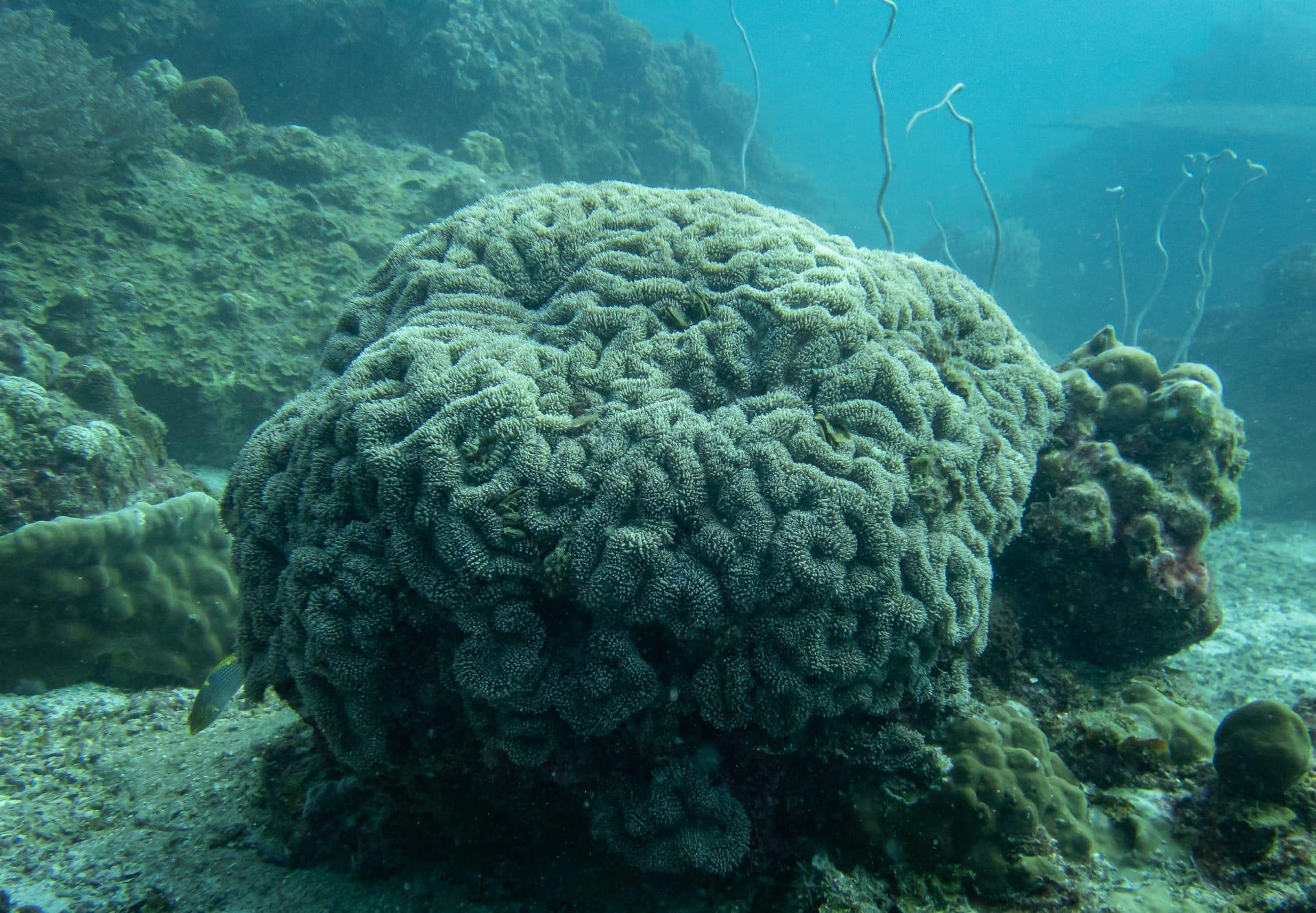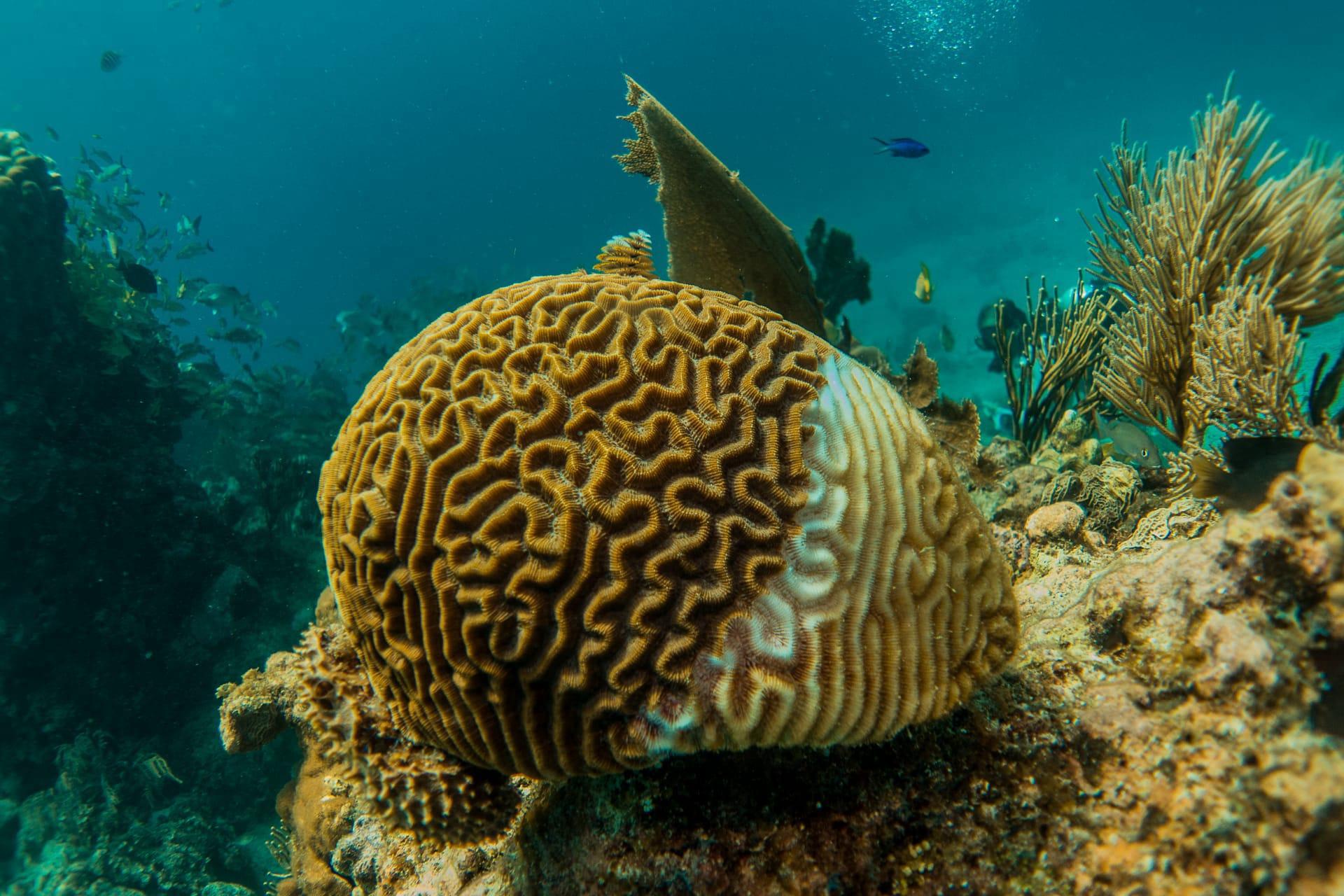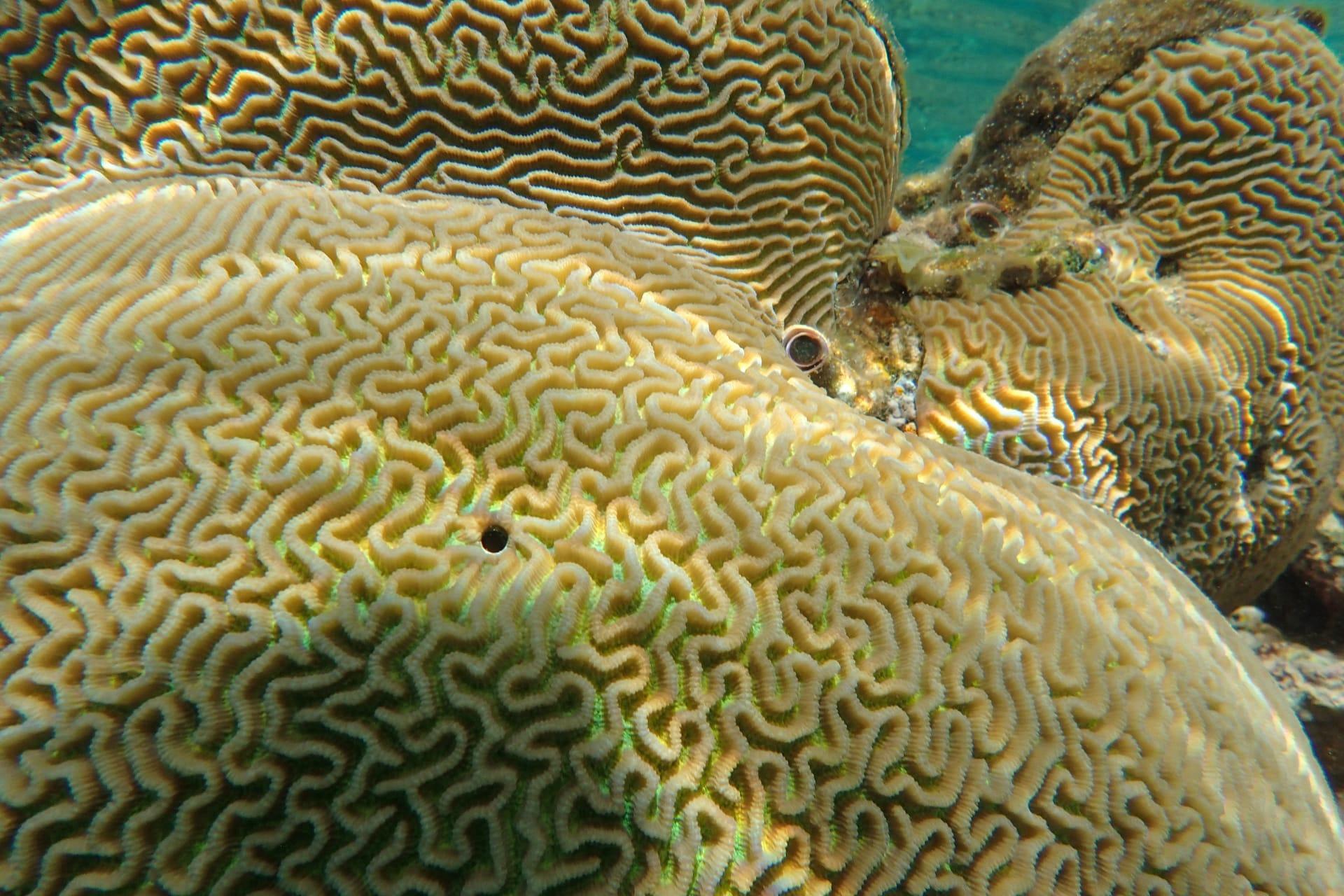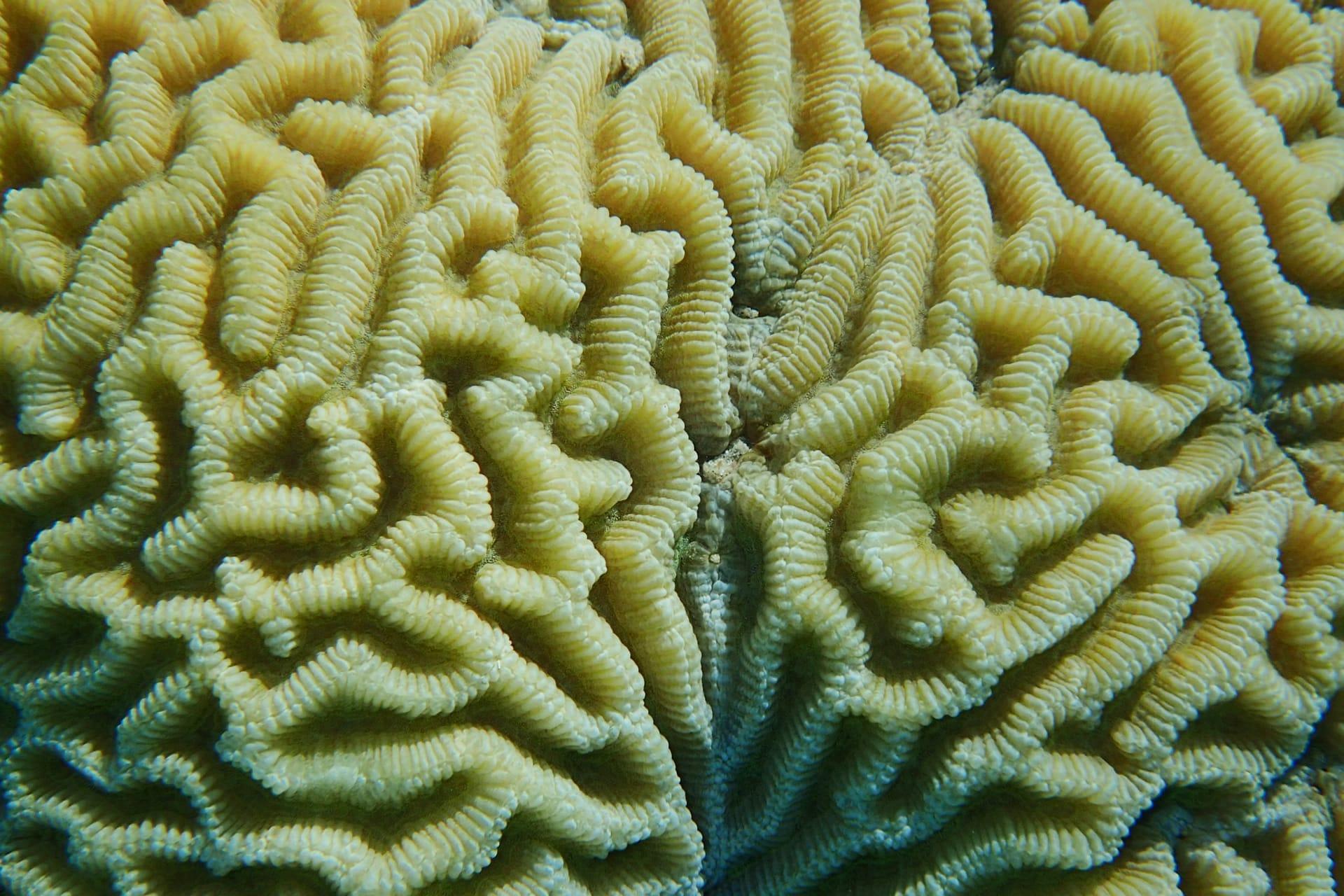Brain Coral
- Home /
- Mini Encyclopedia /
- Animal /
- Brain Coral
1
Brain corals, scientifically referred to as members of the family Mussidae, are a distinctive group within the larger coral community, primarily recognized for their grooved surface resembling a human brain's convoluted appearance. These corals belong to the order Scleractinia, which encompasses the majority of hard corals forming coral reefs. Their calcareous skeletons, which they exude to provide structural support, contribute significantly to reef-building processes, offering a stable habitat for a myriad of marine species.
Geographically, brain corals have a widespread distribution across the warm, shallow waters of the Atlantic, Indian, and Pacific Oceans, thriving predominantly in reef environments. Their habitat ranges from the Caribbean Sea and the Florida Keys to the Great Barrier Reef off the coast of Australia, extending to the Red Sea and parts of the Indian Ocean. These corals favor depths ranging from the shallow intertidal zones to deeper waters, approximately 40 meters below the surface, where sunlight can penetrate to aid in their photosynthetic activities.

2
A common misconception about brain corals is that their intricate brain-like appearance is purely aesthetic or serves no real purpose. People often wonder why they have such a unique shape, questioning if it's just a natural marvel without any functional significance.
The truth is, the brain-like grooves and ridges of these corals play a crucial role in their survival. This structure increases the surface area available for photosynthetic algae, known as zooxanthellae, which live symbiotically within the coral's tissues. The grooves also help in efficiently capturing and directing sediment and nutrient-rich water towards the coral's mouth, aiding in feeding. Additionally, the complex design helps in dissipating the energy of incoming water, protecting the coral from physical damage by waves and currents.

3
Brain corals employ several survival strategies that contribute to their longevity and success in coral reef ecosystems. One key strategy is their symbiotic relationship with zooxanthellae algae. These algae reside within the coral's tissues and perform photosynthesis, converting sunlight into energy. This process not only provides essential nutrients for the coral but also contributes to the oxygen supply in the surrounding waters, supporting other marine life.
Another survival tactic of brain corals is their ability to reproduce both sexually and asexually. Sexual reproduction occurs through a process called spawning, where corals release eggs and sperm into the water for external fertilization, leading to genetic diversity and the colonization of new areas. Asexual reproduction, such as budding or fragmentation, allows brain corals to spread and dominate their habitat, ensuring their resilience and ability to recover from disturbances like storms or bleaching events.

4
In the intricate web of coral reef ecosystems, brain corals play a pivotal role in maintaining the balance and health of these marine environments. They provide a robust physical structure that forms the backbone of the reef, offering shelter, breeding grounds, and hunting territories for a diverse array of marine organisms, including fish, crustaceans, and other invertebrates. This structural complexity enhances biodiversity, making coral reefs some of the most diverse ecosystems on the planet.
The ecological functions of brain corals extend beyond structural support; they are also key players in the biogeochemical cycles of the ocean. By sequestering carbon dioxide during the process of calcium carbonate skeleton formation, they help mitigate the impacts of climate change. Furthermore, their relationship with zooxanthellae contributes to the productivity of coral reefs by generating substantial amounts of organic matter, which forms the base of a complex food web that sustains the reef community.

5
Film: "Coral Reef Adventure" (2003), produced by the United States. This cinematic journey dives into the heart of the South Pacific's coral reefs, highlighting the intricate beauty and vital ecological roles of corals, including brain corals, in marine ecosystems. The film emphasizes the challenges reefs face, such as pollution and climate change, and the urgent need for conservation efforts.
Book: "Coral Reefs: Cities Under the Sea" by Richard C. Murphy is an insightful book that delves into the complex nature of coral reefs, including detailed discussions on brain corals. Published in the United States in 2002, Murphy, a marine biologist, offers a comprehensive overview of coral ecosystems, their inhabitants, and the intricate relationships that sustain them, making it an essential read for anyone interested in marine science.
Book: Another significant contribution is "The Secret Life of Corals" by Elizabeth Kolbert, released in 2017. This book, also from the United States, provides a deep dive into the world of corals, including brain corals, through a blend of scientific research and personal narrative. Kolbert's exploration into the impacts of climate change on coral reefs, and the innovative efforts to save them, presents a compelling case for the conservation of these vital marine habitats.